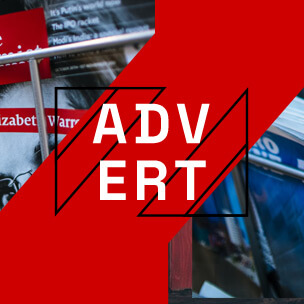Our model of work is fundamentally broken. We burn hours in gridlock commutes to sit in offices in congested business districts, trading time, wellbeing and productivity in the process. Meanwhile, a global movement is gaining traction that flips this model on its head; the 15-Minute City. Not just academic theory anymore, but more so, an urban reset, already globally reshaping how people live, shop and work. As CEO of Workshop17, Paul Keursten has observed how the geography of work affects business performance and quality of life, and for South Africa, with sprawling cities and notoriously bad traffic, this concept offers a blueprint for rethinking where work happens and why bringing professional infrastructure closer to where people live is essential.
What if your office, your gym, your favourite coffee spot and your child’s school were all within a 15-minute walk of your front door? It sounds almost utopian, but this is precisely the model that’s reshaping how cities think about work and life — and it has profound implications for the business landscape of South Africa.
The concept, known as the “15-Minute City”, emerged from the work of Carlos Moreno, an Urbanist at the Sorbonne who has spent years studying how cities function. When Paris Mayor Anne Hidalgo made it central to her 2020 re-election platform, the idea moved from academic theory to practical urban policy. The premise is deceptively simple: design neighbourhoods where daily needs — workspaces, healthcare, education, retail, entertainment — are accessible within a quarter-hour journey on foot or by bike.
At its core, the 15-Minute City challenges decades of urban planning that prioritised cars and long commutes. It advocates for human-scale environments where workspaces and lifestyle coexist side by side, supporting not just efficiency but genuine quality of life. The model not only promotes sustainability, but social cohesion and balance — values that resonate deeply in cities grappling with congestion, environmental concerns and the changing nature of work itself.
Many professionals spend hours each week commuting between the suburbs and the city centre, sacrificing time with family, personal wellbeing and productivity. The traditional office-centric model assumes people should travel to work, rather than asking whether work should come to where people live.
The pandemic accelerated a shift that was already underway. Remote work proved that physical presence in a CBD office five days a week wasn’t always necessary. Yet fully remote work has its own limitations — the isolation, the lack of professional community, the blurred boundaries between home and work life. What many people discovered they actually wanted was something in between: access to a professional workspace close to home, with the flexibility to choose when and how they use it.
This is where Moreno’s thinking becomes particularly relevant. The 15-Minute City proposes distributing the infrastructure of daily life more evenly across urban areas, creating multiple centres of activity rather than forcing everything through a single bottleneck. Applied to the world of work, this means reconsidering where we place professional amenities and recognising the value in bringing them closer to residential communities. City centres retain their importance, but they no longer need to be the sole destination for professional life.
Consider what becomes possible when a professional workspace exists as part of a neighbourhood rather than isolated in a business district. A parent can attend a morning meeting, pop home for lunch with their children, then return for an afternoon work session. Someone building a startup can meet clients in a professional setting without the overhead of a long-term lease in the CBD. Established businesses can offer their teams local workspace options reducing commute stress while maintaining collaboration opportunities. The workspace becomes woven into daily routines rather than being a destination that requires significant travel.
Nodes like Newlands, Century City, Hyde Park Corner, and Ballito, along with emerging hubs like Muizenberg, show how work can live alongside life. These mixed-use districts have moved beyond single-purpose business spaces into textured neighbourhoods, premium offices and coworking spaces nested among apartments, retail, restaurants, gyms, padel courts, green space, and transport zones. Workshop17 locations inside these residential-adjacent nodes offer flexible, high-grade workspace with walkable access to daily amenities, so people can do focused work, run errands, train, meet friends, and get home on time. It’s not the full 15-Minute City yet, but it’s moving decisively that way, and we’re building for it.
What makes this model particularly compelling for business owners and professionals is the combination of convenience and quality. Working locally doesn’t mean compromising on professional standards or settling for lesser facilities. When done well, distributed workspace can offer the same level of design, technology and service as traditional CBD offices, with the added benefit of being embedded in a more liveable context. You’re not choosing between professional credibility and personal convenience — you’re accessing both.
There’s also an environmental dimension worth considering. Reducing commute distances and car dependency aligns with broader sustainability goals. When people can walk or cycle to a professional workspace, the carbon footprint of the working day shrinks considerably. Moreno’s model explicitly links urban design to climate action, arguing that more compact, polycentral cities are essential for reducing emissions and improving air quality.
The shift towards distributed workspace also has implications for how we think about community and local economy. When professionals work in their own neighbourhoods, they’re more likely to use local services, support nearby businesses and participate in community life. The economic activity that was once concentrated in business districts gets redistributed, strengthening suburban centres and creating more balanced urban development.
This isn’t to suggest that city centres will or should become irrelevant. They’ll always have a role for certain types of business, for cultural institutions and for the energy that comes from density and diversity. But the future likely involves a more distributed model where people have genuine choices about where they work, based on what makes sense for their life circumstances rather than outdated assumptions about where work must happen.
As the South Africa business and retail sector continues to grow and evolve, embracing concepts like the 15-Minute City could help us build a more resilient, sustainable and humane urban environment. It means questioning old patterns, investing in suburban infrastructure and recognising that bringing professional amenities closer to where people live isn’t a compromise — it’s an improvement.
The question for business leaders and urban planners alike is whether they’re willing to rethink the geography of work. The tools and models exist. The demand is clearly there. What remains is the decision to act on it.


